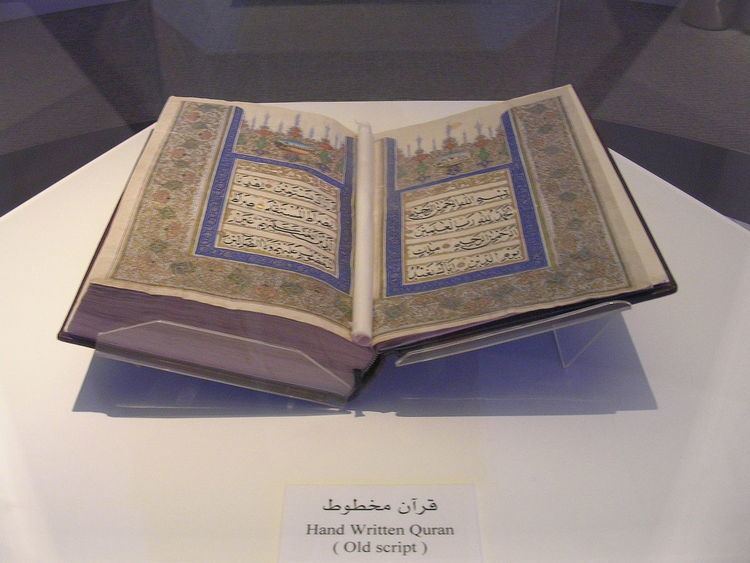Website Official website Phone +966 11 402 9500 | Opened 1999 | |
 | ||
Established 1999; 18 years ago (1999) Location King Abdul Aziz Historical CentreRiyadh Director Abdullah bin Saud Al Saud Hours Open today · 12–8PMWednesday12–8PMThursday12–8PMFriday4–8PMSaturday4–8PMSunday12–2PMMonday12–8PMTuesday12–8PMSuggest an edit Similar Masmak fort, Riyadh TV Tower, Salaam Park Riyadh, Royal Saudi Air Force Mu, Kingdom Centre | ||
National museum of saudi arabia
The National Museum of Saudi Arabia is a major national museum in Saudi Arabia. Established in 1999, it is part of the King Abdulaziz Historical Centre in Riyadh.
Contents
Saudi national museum
The building
The National Museum was part of the "Murabba' Development Plan" to refurbish the area of and around the old Murabba' Palace district for the Centennial Celebrations in Saudi Arabia. Thus the deadline was set to early 1999, leaving only 26 months for the planning and building of the museum from scratch, although ideas for such a museum had been discussed since the eighties. For the design the lead architect Raymond Moriyama was inspired by the form and colors of the sand dunes of the "Red Sands" just outside Riyadh. The west facade along Murabba' Square resembles the soft contour of a sandune with its layout forming a crescent pointing towards Mecca. The west facade opens into a Islamic history of the Arabian Peninsula. For the final galleries the visitor enters the "Unification Drum" which has displays about the current Saudi State. The last gallery illustrates the two holy mosques and the hajj. Additionally there are two further galleries for special exhibitions.
The concept for the didactic design of the exhibitions is somewhat different from the traditional approach of the classic museums. There is less emphasis on individual exhibits displayed out of their cultural context as objects of great value. There are a great many replicas and life size dioramic displays, illustrating and educating about certain points and issues. As such it is sometimes difficult to identify certain specific pieces and even tell replicas from originals. The idea behind this is not to focus on individual pieces in their own right but rather use them as examples to highlight the general ideas or concepts they represent.
Exhibitions
The exhibits are organized in eight "Exhibition Halls" or "Galleries".
